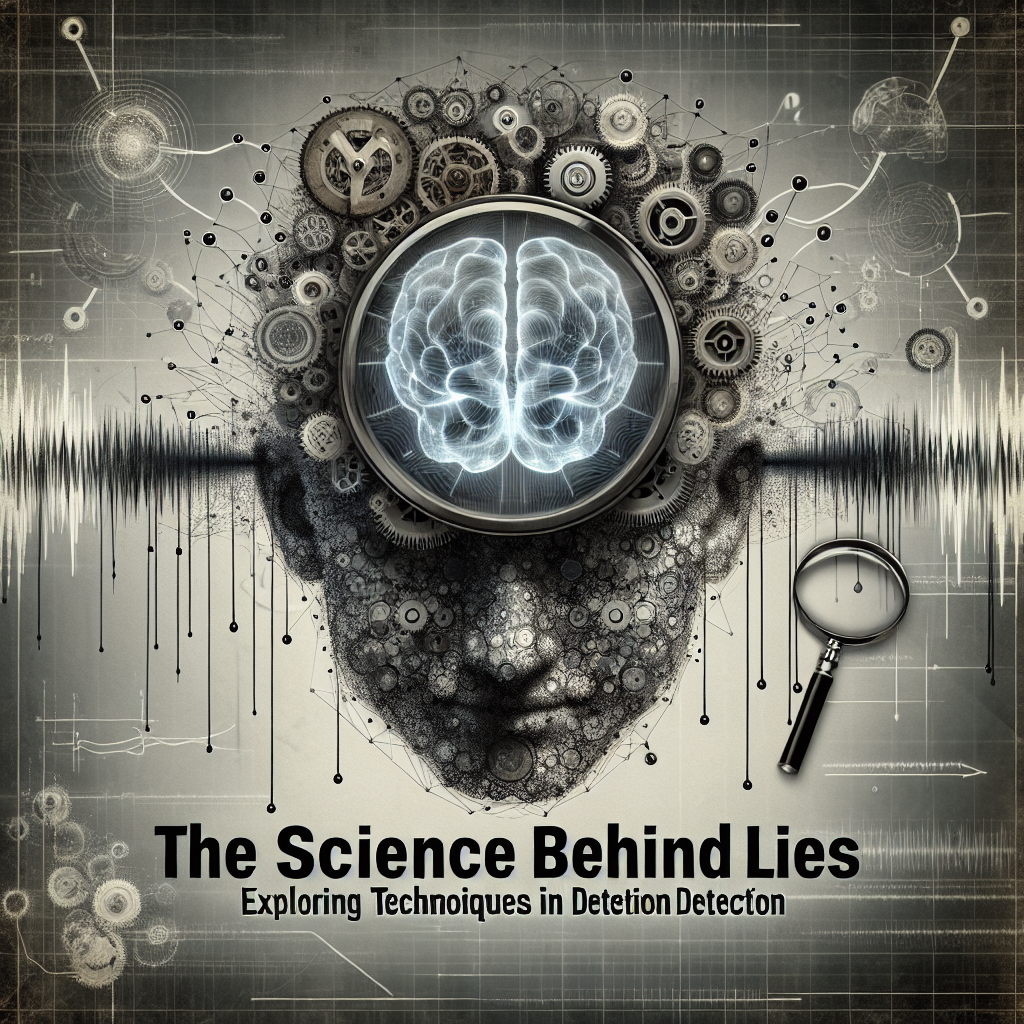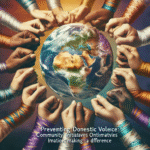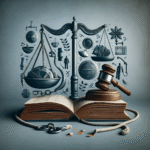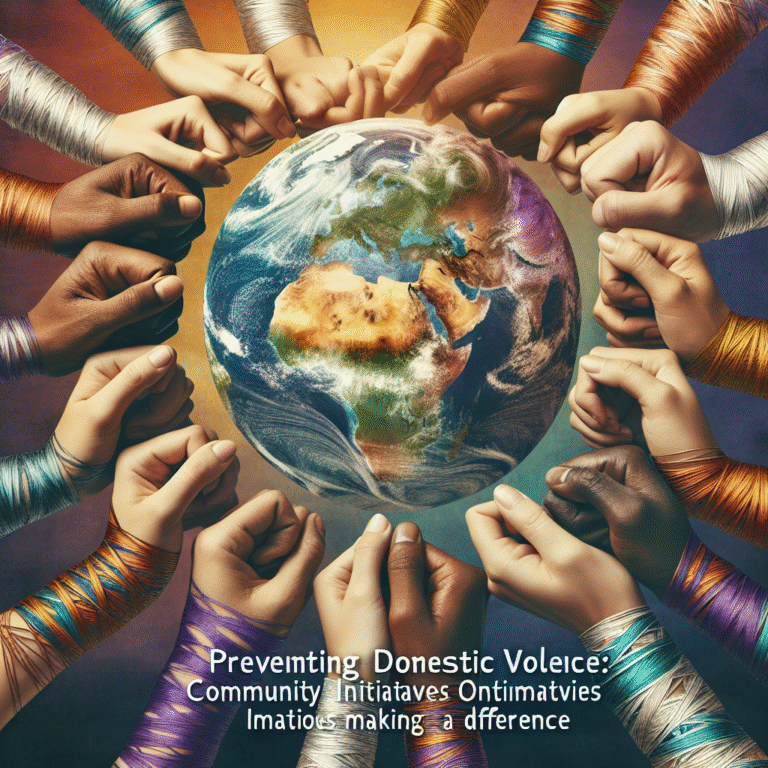
Introduction
In a world teeming with information, determining truth from falsehood has never been more critical. The ability to detect deception is pivotal not only in personal relationships but also in professional settings, from law enforcement to corporate environments. While lying might be a human trait, understanding its science can empower us to navigate the complexities of trust and honesty. Welcome to "The Science Behind Lies: Exploring Techniques in Deception Detection"—a journey that unravels the intricacies of deception and equips you with the knowledge to discern fact from fiction.
The Psychology of Lying
What Drives Us to Lie?
From white lies to significant fabrications, the motivations behind deception are varied. According to psychological research, individuals often lie for three primary reasons: to gain a reward, to avoid punishment, or to protect someone’s feelings. Understanding these motivations is essential in "The Science Behind Lies: Exploring Techniques in Deception Detection."
Cognitive Dissonance: The Internal Conflict
When a person lies, they often face cognitive dissonance—the mental discomfort experienced when holding two contradictory beliefs. This phenomenon can reveal itself through bodily cues, such as fidgeting or avoiding eye contact, which skilled observers can identify.
Case Study: The Denver Airport Security Incident
In 2015, a passenger at Denver International Airport was caught lying about her flight details. Security personnel noticed her evasive behavior, which included averted eyes and fidgeting hands. Upon further questioning, she eventually confessed that her flight was unaccounted for. This incident underscores how understanding human psychology and its manifestations can aid in deception detection.
Nonverbal Cues: The Body Speaks
Facial Expressions and Microexpressions
Humans communicate far more through body language than words alone. Paul Ekman, a pioneer in the study of emotions and their relation to facial expressions, identified microexpressions—brief, involuntary facial expressions that can reveal true emotions.
The Power of the Eyes
Eye movements can be significant indicators of deceit. Research shows that a person may blink more frequently or dilate their pupils when lying. Observers must take care to avoid drawing conclusions solely from eye behavior, as cultural differences play a significant role.
Case Study: The Clinton Lying Incident
During his testimony in the Monica Lewinsky scandal, former President Bill Clinton’s microexpressions were dissected by experts. His shifts in eye contact and facial cues raised red flags for observers, inciting debates about the accuracy of deception detection.
Verbal Indicators: Words Matter
Language Patterns
Linguistic cues can provide significant insights into dishonesty. Deceivers often employ ambiguous language and hedge their statements, using phrases like "to be honest" or "frankly." These softeners can indicate an attempt to mask the truth.
The Truth Default Theory
This theory posits that people typically operate under the assumption that others are telling the truth. Liars, therefore, must construct stories that are plausible and coherent. By analyzing inconsistencies in narratives, trained individuals can detect deceit.
Case Study: The Michael Jackson Trial
During the trial of Michael Jackson, witness testimonies were examined for inconsistencies in their stories. Experts noted that the frequency of qualifying phrases indicated attempts at deception, providing insights into the reliability of their accounts.
Detection Techniques: Tools of the Trade
Polygraph Examinations
The polygraph, often dubbed a "lie detector," measures physiological responses such as heart rate, blood pressure, and respiration while the subject answers questions. However, its reliability remains a topic of debate within the field of psychology and law enforcement.
| Technique | Pros | Cons |
|---|---|---|
| Polygraph Testing | Can detect physiological responses | Accuracy varies; can be misleading |
| Behavioral Analysis | Observing nonverbal cues | Requires skilled professionals |
| Statement Analysis | Examines language patterns | Time-consuming; subjective |
Statement Analysis
This technique involves scrutinizing the structure and content of a person’s statements. Trained analysts look for inconsistencies and omissions, which can indicate deception. By applying principles from forensic linguistics, they can gauge the truthfulness of testimonies.
Brain Imaging Technologies
Emerging technologies like fMRI are evolving as potential tools for detecting deception. By measuring brain activity in specific areas, researchers anticipate that these methods could identify when deceptive thoughts occur. While promising, these techniques are still in the experimental stages.
Case Study: The National Institute of Health Research
Recent studies at the National Institutes of Health have explored the application of fMRI in deception detection. Results suggest that distinct neural patterns may differentiate truthful answers from lies. However, ethical considerations and practical applications remain contentious.
The Role of Context
Situational Awareness
Understanding the context in which communication occurs enhances the accuracy of deception detection. Factors such as stress, environmental cues, and interpersonal relationships can profoundly affect behavior and honesty.
Cultural Influences
Cultural norms play a significant role in how deceit is expressed and perceived. In some cultures, direct eye contact may signify confidence and honesty, while in others, it may be seen as aggressive or disrespectful.
Case Study: Cross-Cultural Communication
Analyzing cross-cultural interviews reveals differing approaches to honesty and deception. For instance, non-Western cultures may prioritize harmony and face-saving strategies, making conflict avoidance a common reason for lying.
Ethical Considerations
The Fine Line Between Truth and Privacy
As we delve into "The Science Behind Lies: Exploring Techniques in Deception Detection," ethical implications must be addressed. Should deception detection techniques be used in every context? What about an individual’s right to privacy?
Consent and Trust
Using methods like polygraphs or fMRI scans rely on informed consent. If individuals feel pressured into submitting to such examinations, trust may erode, complicating interpersonal dynamics.
Case Study: The Use of Deception Detection in Job Interviews
Some companies have implemented deception detection techniques during hiring processes. While they aim to ensure honesty, this practice has raised ethical concerns regarding the invasion of privacy and the potential for discrimination.
Conclusion
Understanding "The Science Behind Lies: Exploring Techniques in Deception Detection" offers valuable insights into human behavior. As you navigate your interactions, remember that deception is a complex phenomenon steeped in psychological and social variables. By recognizing the signs of dishonesty—be it through nonverbal cues, linguistic patterns, or advanced detection techniques—you empower yourself to foster authenticity in your relationships and professional life.
Before concluding, consider this challenge: how can the principles you’ve learned be applied to enhance trust and understanding in your everyday interactions? Knowledge is not just power; it’s a pathway to deeper connections.
FAQs Section
1. What are common indicators of deception?
Common indicators include body language discrepancies, inconsistent verbal cues, and emotional incongruence. However, it’s essential to treat these indicators as part of a broader context.
2. Can technology reliably detect lies?
While technologies like polygraphs and fMRI have potential, none are foolproof. They’re more effective when combined with behavioral analysis and situational awareness.
3. How does cultural context influence deception detection?
Cultural norms shape expressions of honesty and dishonesty. Awareness of these differences is crucial for accurate interpretation when engaging in cross-cultural settings.
4. Are there ethical concerns surrounding deception detection?
Yes, ethical concerns include privacy invasion, consent issues, and the potential for misuse of detection techniques, particularly in sensitive environments like workplaces.
5. How can I improve my deception detection skills?
Enhancing your skills requires practice and observation. Study body language, familiarize yourself with linguistic cues, and reflect on contextual factors influencing communication for improved awareness.
Incorporating the knowledge of "The Science Behind Lies: Exploring Techniques in Deception Detection" into your interactions can not only improve your ability to discern truth from falsehood but also foster a more authentic connection with those around you.


















